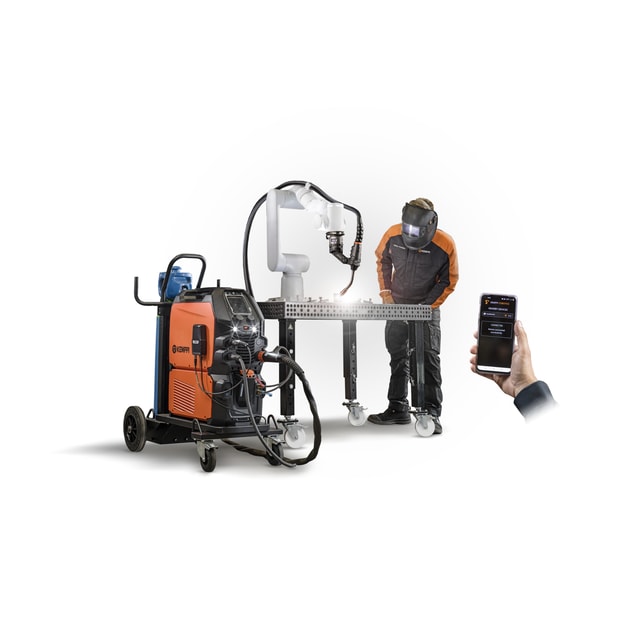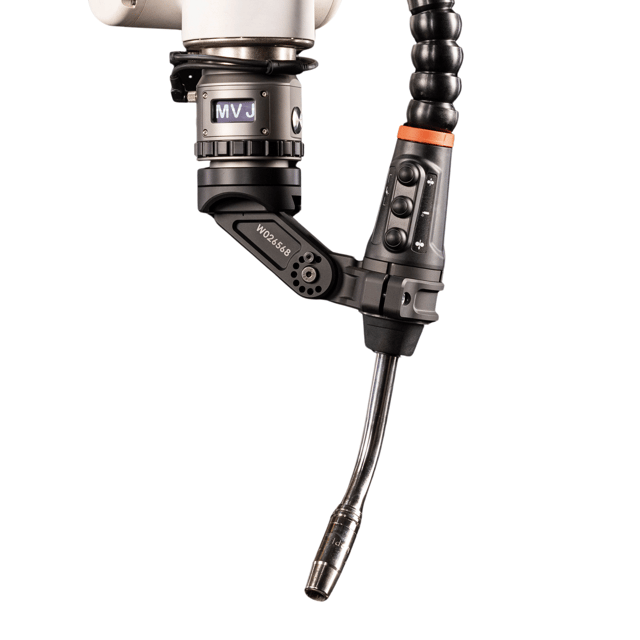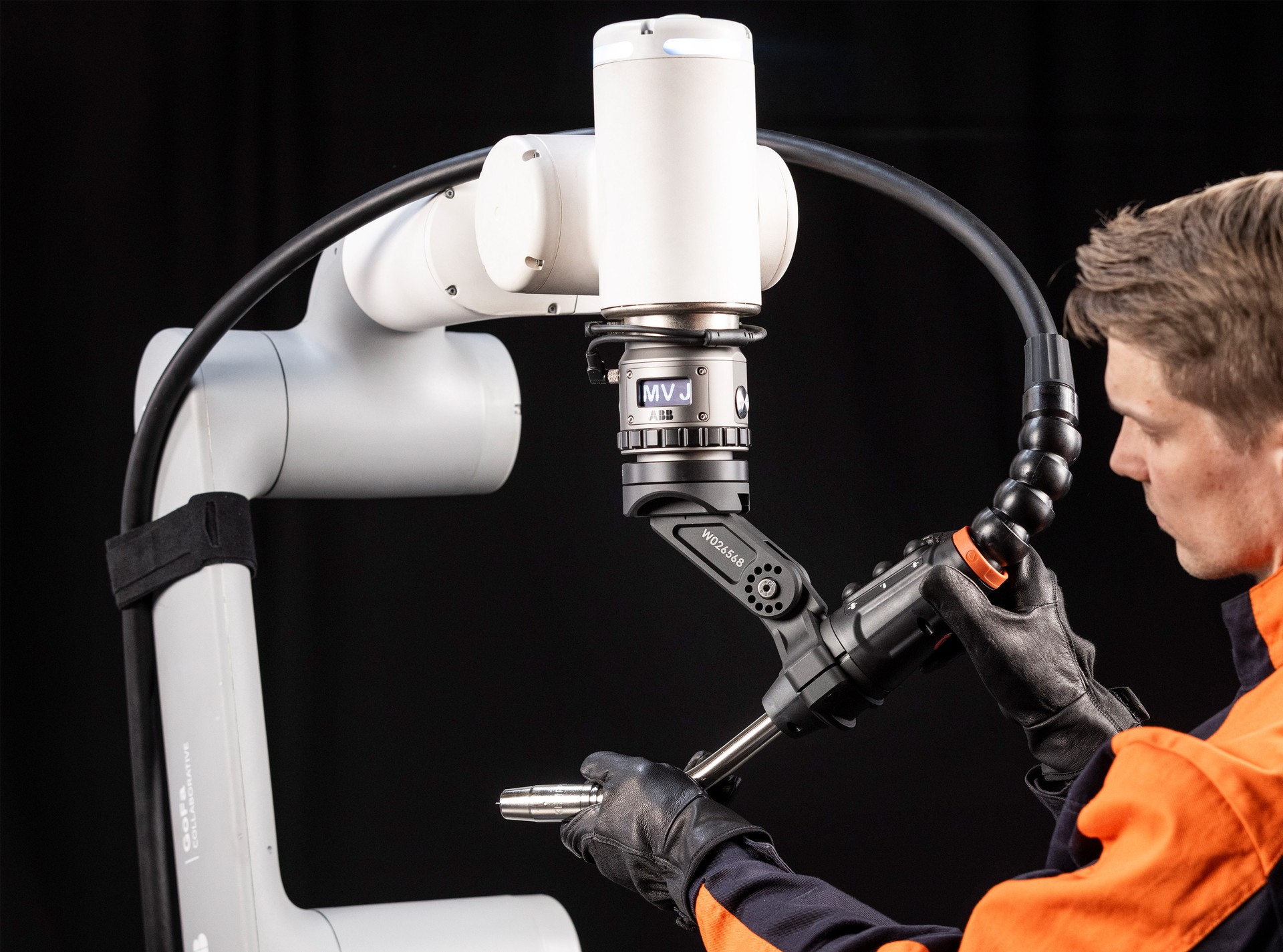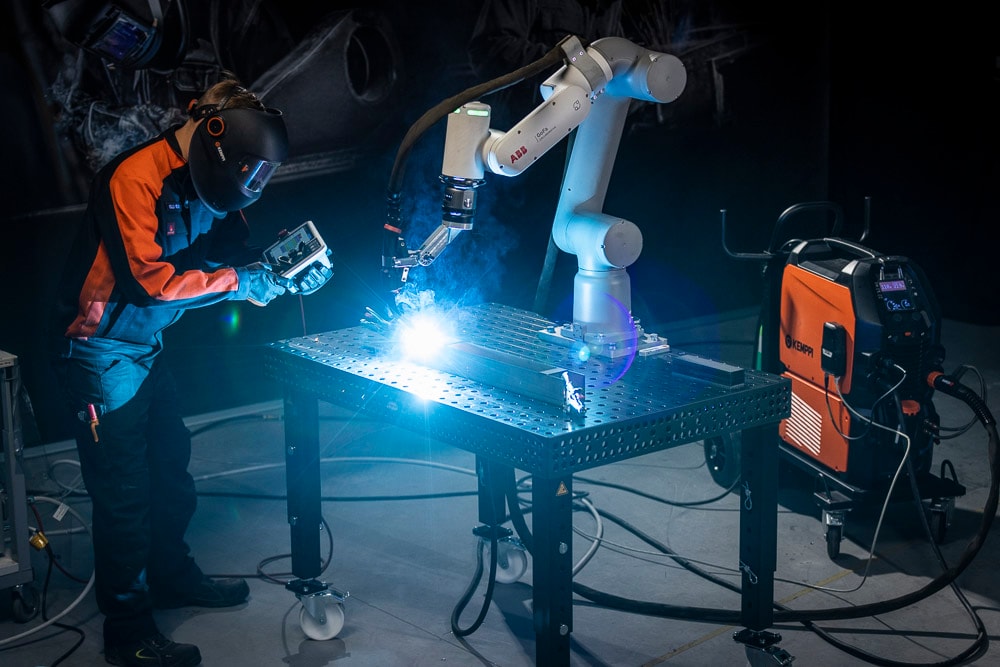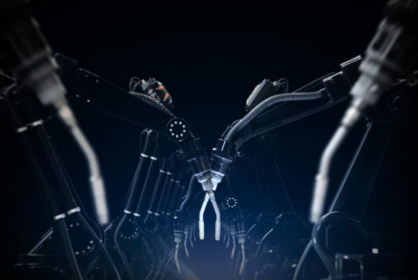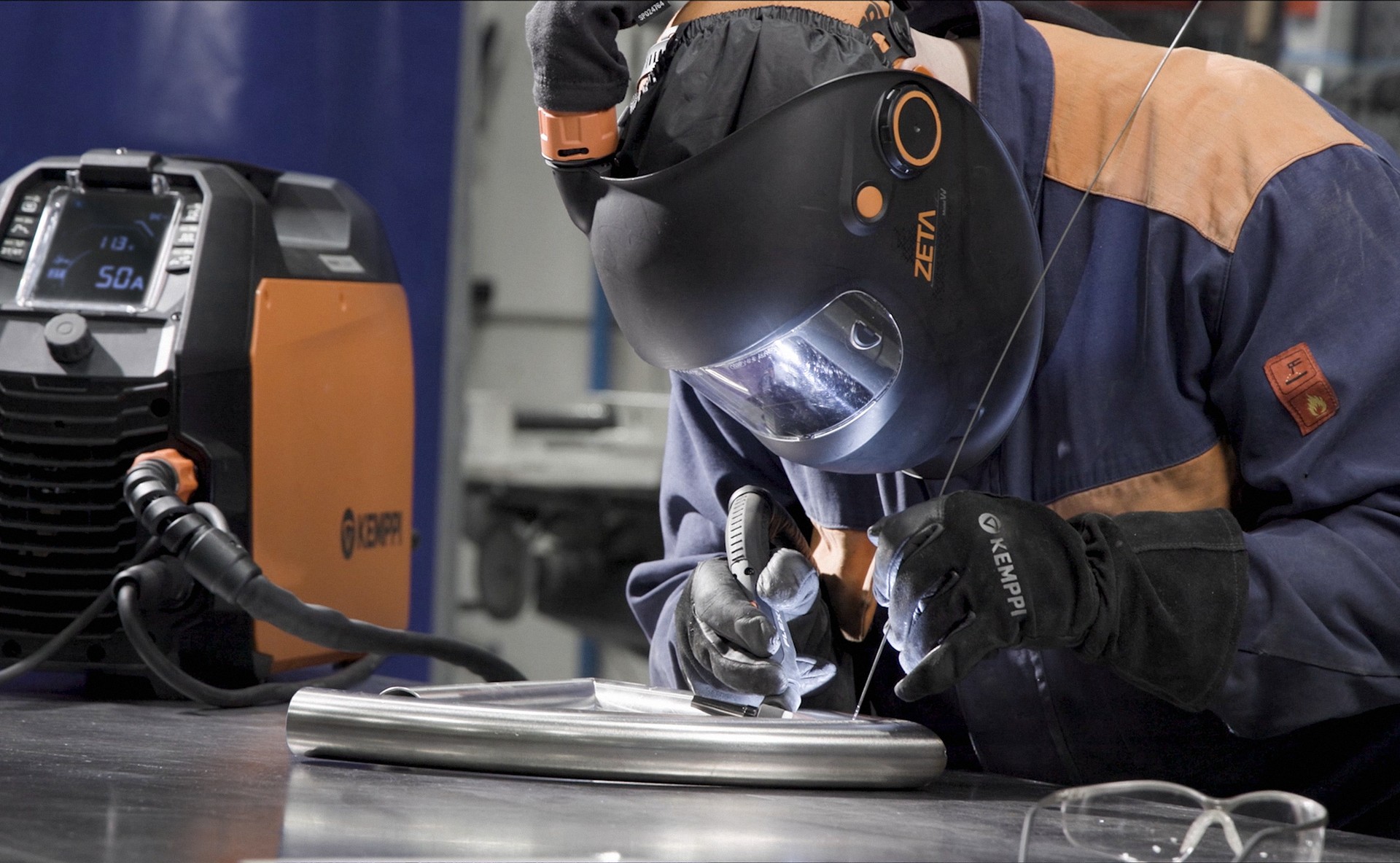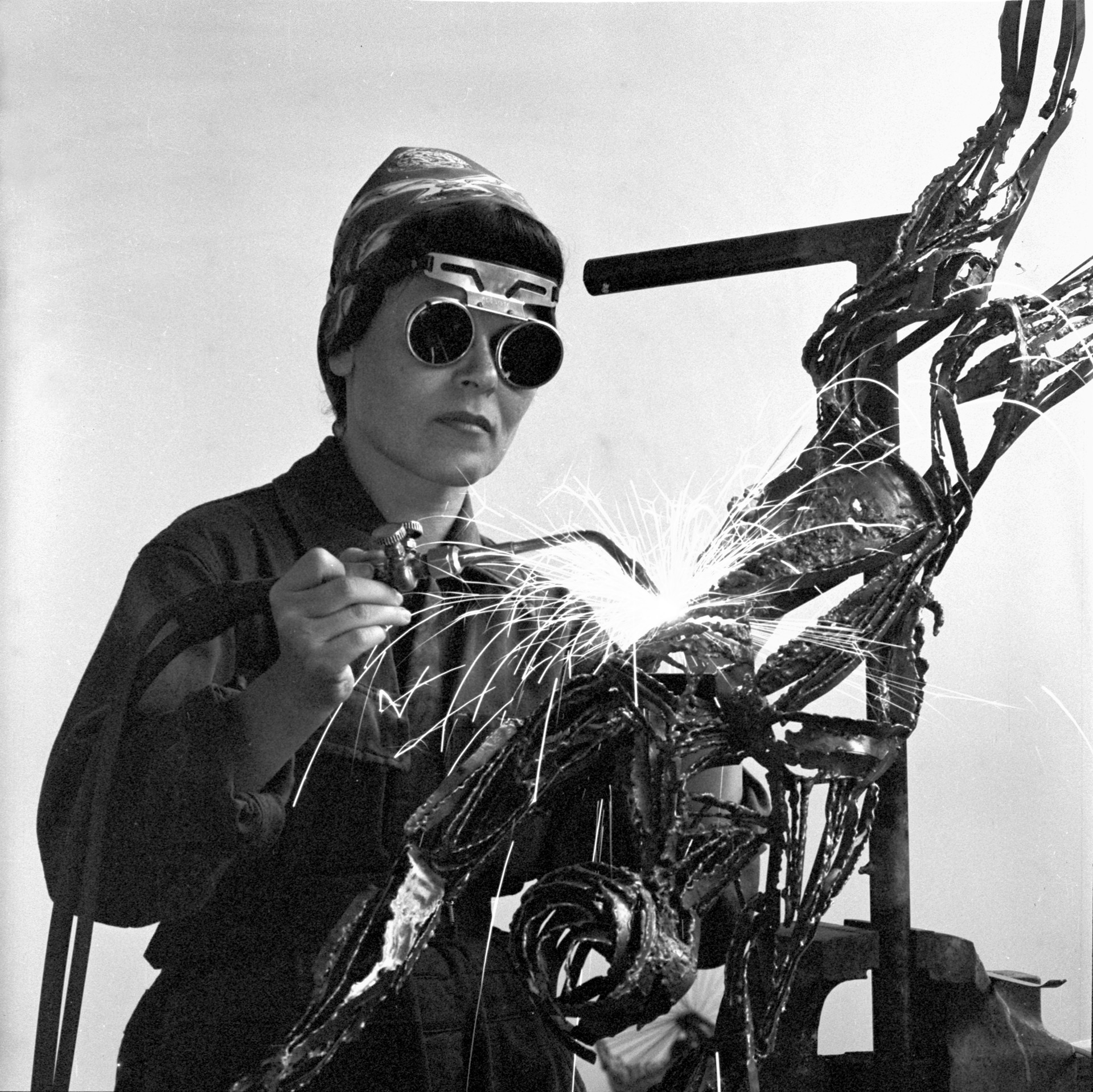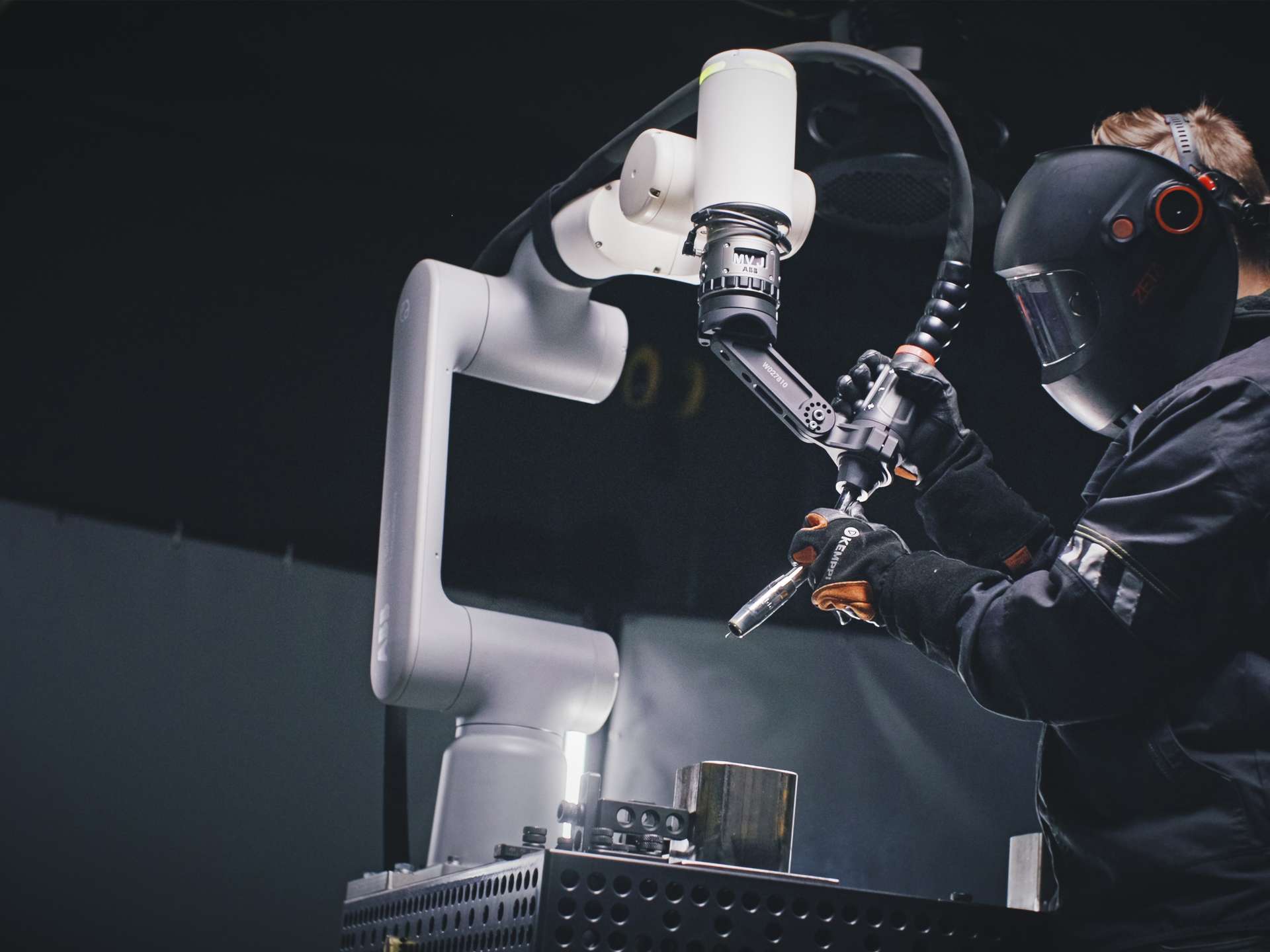
Automatyzacja spawania
Cobot welding automates manual welding for superior efficiency and quality
16 kwietnia 2025
Cobot welding integrates collaborative robots (cobots) into welding processes to enhance productivity, quality, and safety.
Artturi Salmela
Cobot welding integrates collaborative robots (cobots) into welding processes to enhance productivity, quality, and safety. By automating repetitive tasks, cobots help manufacturers achieve consistent weld quality and improve overall efficiency. This blog explores the benefits of cobot welding, its applications across industries, and how businesses can gain a competitive edge with Kemppi’s advanced solutions.
What is cobot welding?
Cobot welding leverages collaborative robots to automate MIG/MAG welding and other processes. Unlike traditional industrial robots, cobots are designed to work alongside human operators, offering a user-friendly, flexible, and cost-efficient automation solution. With advanced sensors and easy programming, cobots ensure a safer and more adaptable welding environment.
Why invest in cobot welding?
According to Eetu Kivioja, Kemppi’s Commercial Development Director for Torches, the key advantage of cobot welding is its ease of use:
“Any welder can become a cobot welder. Programming is intuitive and doesn’t require extensive training.”
This accessibility allows skilled welders to focus on complex tasks while cobots handle repetitive work, improving overall production efficiency. Cobot welding also addresses the global shortage of welders. Kivioja explains:
“The payback time for a cobot investment is short—if one welder can operate multiple cobots, productivity increases significantly.”
With a higher arc-on time compared to manual welding (where arc-on time typically averages around 20%), cobots maximize output, helping businesses scale operations effectively.
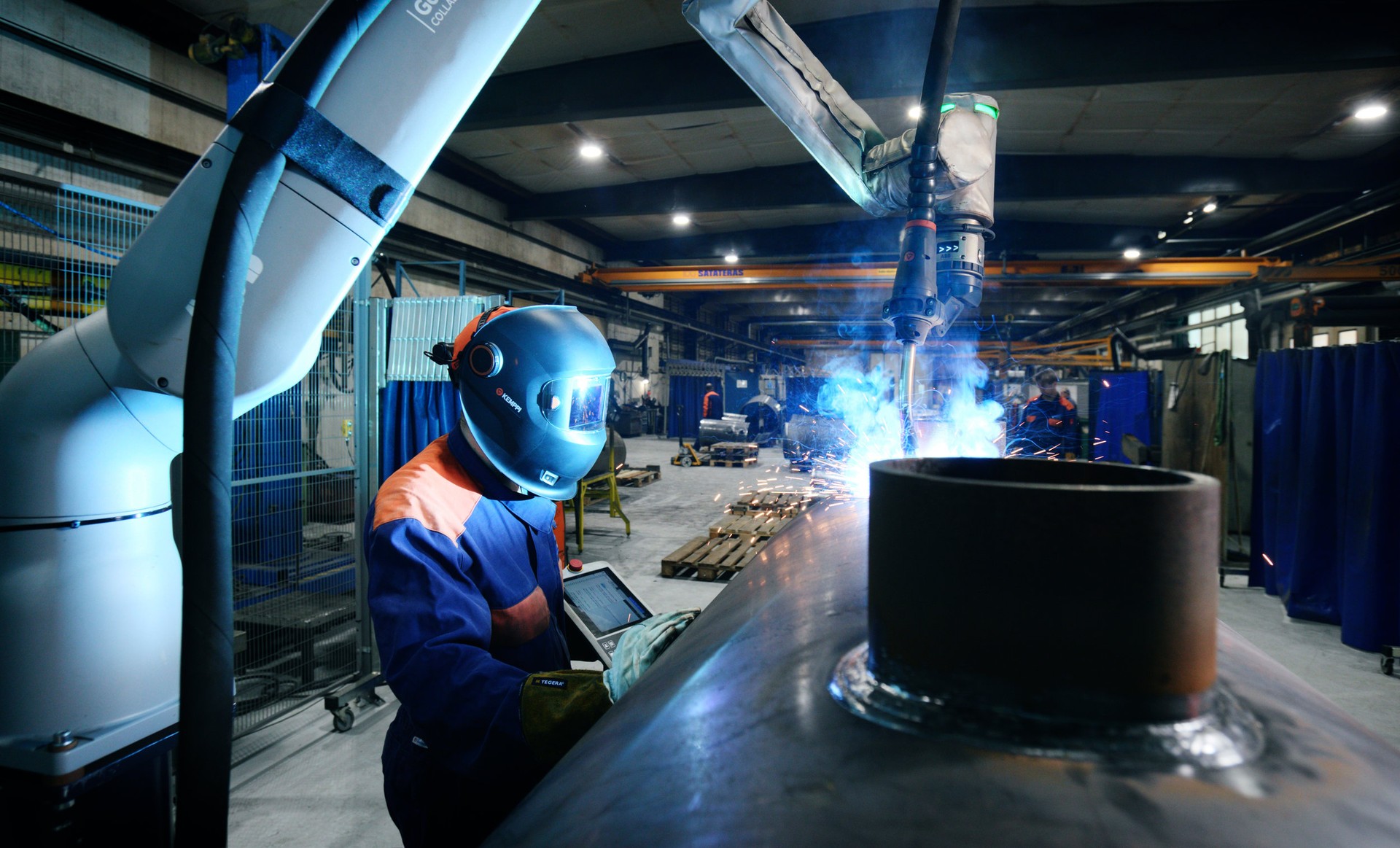
Another common misconception is that cobots require manual teaching for every weld. Kivioja clarifies:
“With processes like TAST*, cobots can automatically follow the joint with minimal manual input. Operators only need to set the start and end points.”
Kemppi develops automation solutions that integrate cobots seamlessly into production workflows. These solutions ensure consistent weld quality while reducing downtime and physical strain on operators.
*TAST (Through Arc Seam Tracking) allows the cobot to maintain a stable welding path by adjusting based on arc characteristics, ensuring precise and reliable results.
Industries benefiting from cobot welding
Cobot welding offers flexible automation for various industries. Artturi Salmela, Kemppi’s Product Manager for Automated Welding, highlights its versatility:
“Cobot welding is widely used across shipbuilding, furniture manufacturing, pipe fittings, sports equipment, and small to medium-sized machine shops.”

Industries leveraging cobot welding include:
Automotive – Enhances precision and efficiency in MIG/MAG welding for large and small-scale production.
Metal Fabrication – Delivers consistent results in custom and small-batch manufacturing.
Aerospace – Meets high precision standards for complex components.
Renewable Energy – Improves efficiency in wind turbine and solar panel production.
Heavy Equipment Manufacturing – Speeds up the welding of large components.
Shipbuilding – Automates welding for improved quality and reduced costs.
Infrastructure – Enhances safety and efficiency in large-scale projects like bridges and pipelines.
“There are two main ways to integrate cobots into production,” Salmela explains. “Either bring the cobot to the workpiece (for larger components) or bring the workpiece to the cobot (for smaller parts).”
This flexibility makes cobot welding adaptable to different production setups.
Key benefits of cobot welding
Cobot welding delivers significant advantages in manufacturing:
Consistency – Ensures precise, repeatable welds, reducing errors and rework.
Connectivity – Offers industrial-grade connectivity through fieldbus integration.
Productivity – Automates repetitive welding, freeing welders for high-value tasks.
Safety – Reduces exposure to hazardous conditions, improving workplace safety.
Cost efficiency – Provides an affordable, scalable entry into welding automation.
Kivioja highlights how Kemppi’s approach simplifies welding automation:
“Our cobot welding torches are based on manual welding technology, making the transition to automation smooth. Consumables remain the same, reducing costs.”
Salmela adds:
“Kemppi’s solution offers seamless connectivity between manual welding machines and automated systems, making integration straightforward.”
Why choose Kemppi for cobot welding?
Kemppi’s cobot welding solution includes a manual welding machine, a cobot welding torch, and a compact Digital Connectivity Module (DCM)—a powerful combination ensuring precision, ease of use, and reliability.
Kivioja emphasizes the importance of flexibility and durability:
“The Kemppi Flexlite GXe-C cobot torch is designed for maximum adjustability, with different bending necks and a unique adjustable bracket. It’s built on our proven Flexlite GXe manual torch technology, ensuring robustness and reliability.”
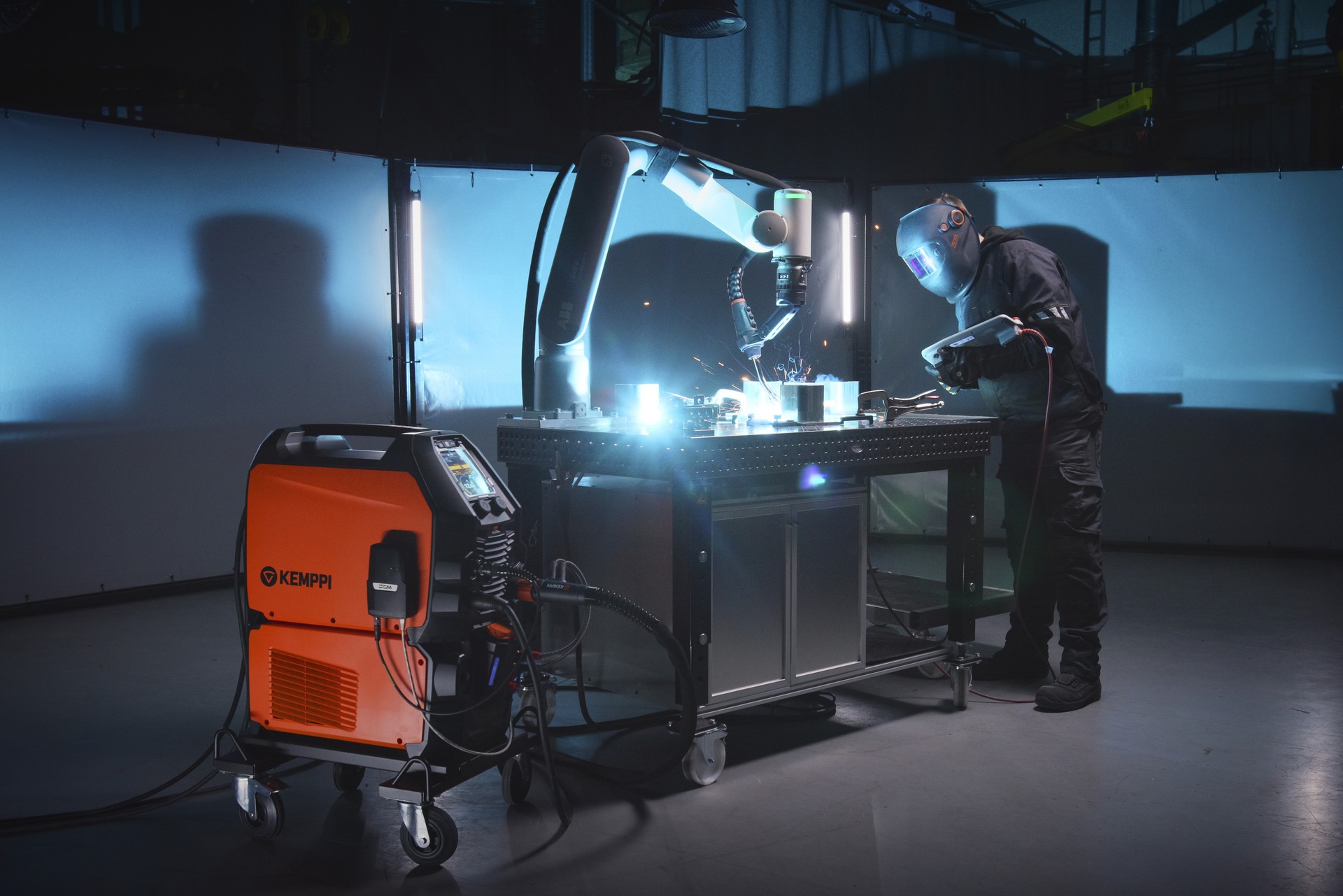
With 70+ years of welding expertise, Kemppi delivers automation solutions designed for efficiency, quality, and ease of use, helping businesses transition seamlessly into modern welding automation.
Conclusion
Cobot welding is a game-changer for companies looking to optimize welding operations. By automating repetitive tasks, businesses can tackle labor shortages, improve safety, and boost productivity.
Kivioja and Salmela emphasize that cobot welding doesn’t replace human welders; it empowers them. Skilled professionals can focus on demanding, high-value work while cobots handle routine welding, driving efficiency and competitiveness.
Kemppi’s cobot welding solutions provide a reliable, cost-effective pathway to automation for manufacturers looking to future-proof their welding processes.

Artturi Salmela
Artturi Salmela
Product Manager, Automation at Kemppi Oy. A robotics expert with 20 years of experience in e.g. computer vision, user interfaces, offline programming, and robotic welding. Interested in the development of welding automation and its connectivity to digital systems.

Eetu Kivioja
Eetu Kivioja
Commercial Product Manager, Torches at Kemppi Oy and Trafimet. Have been working with welding guns and torches since 2017 at Kemppi. Focused on customer understanding and transparent product management communication. Still believes benefits of face-to-face meetings.
